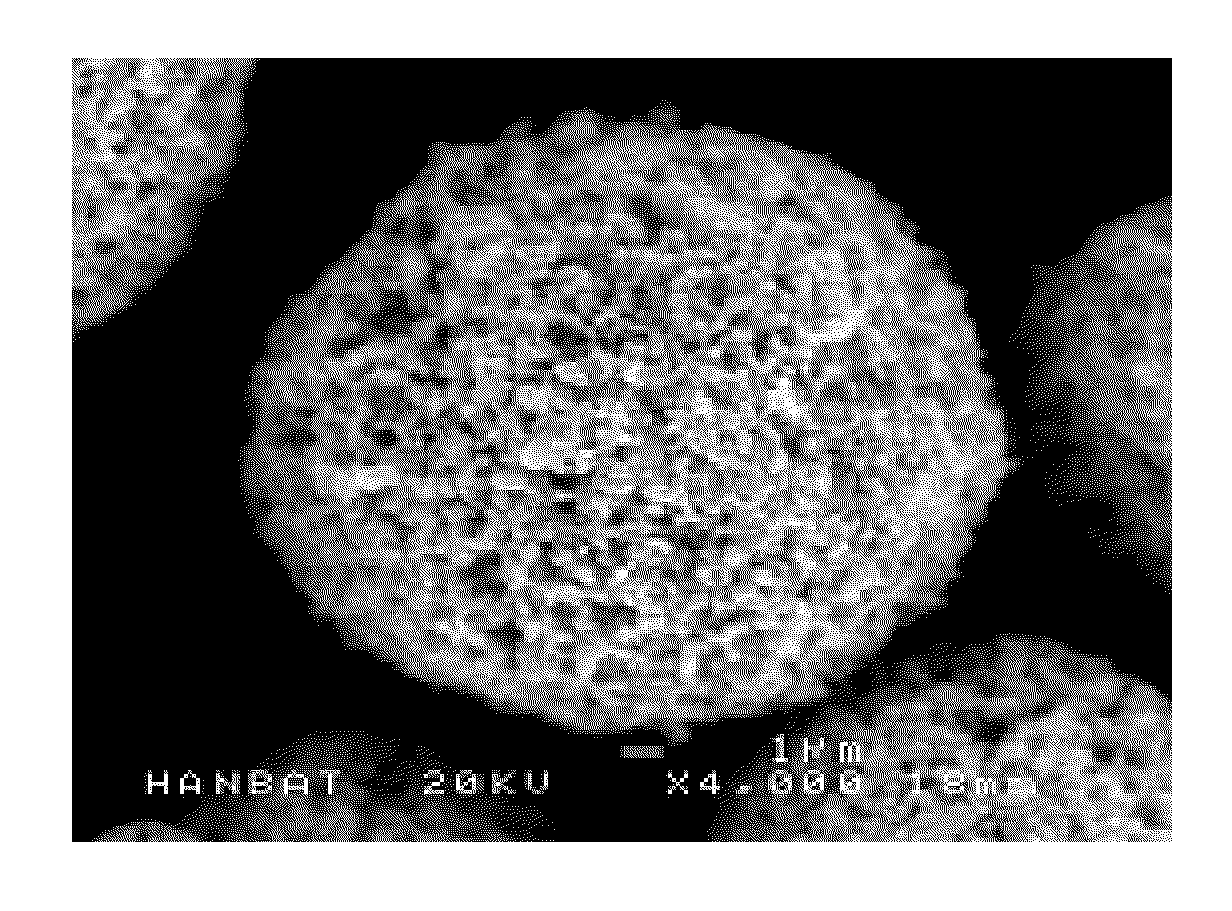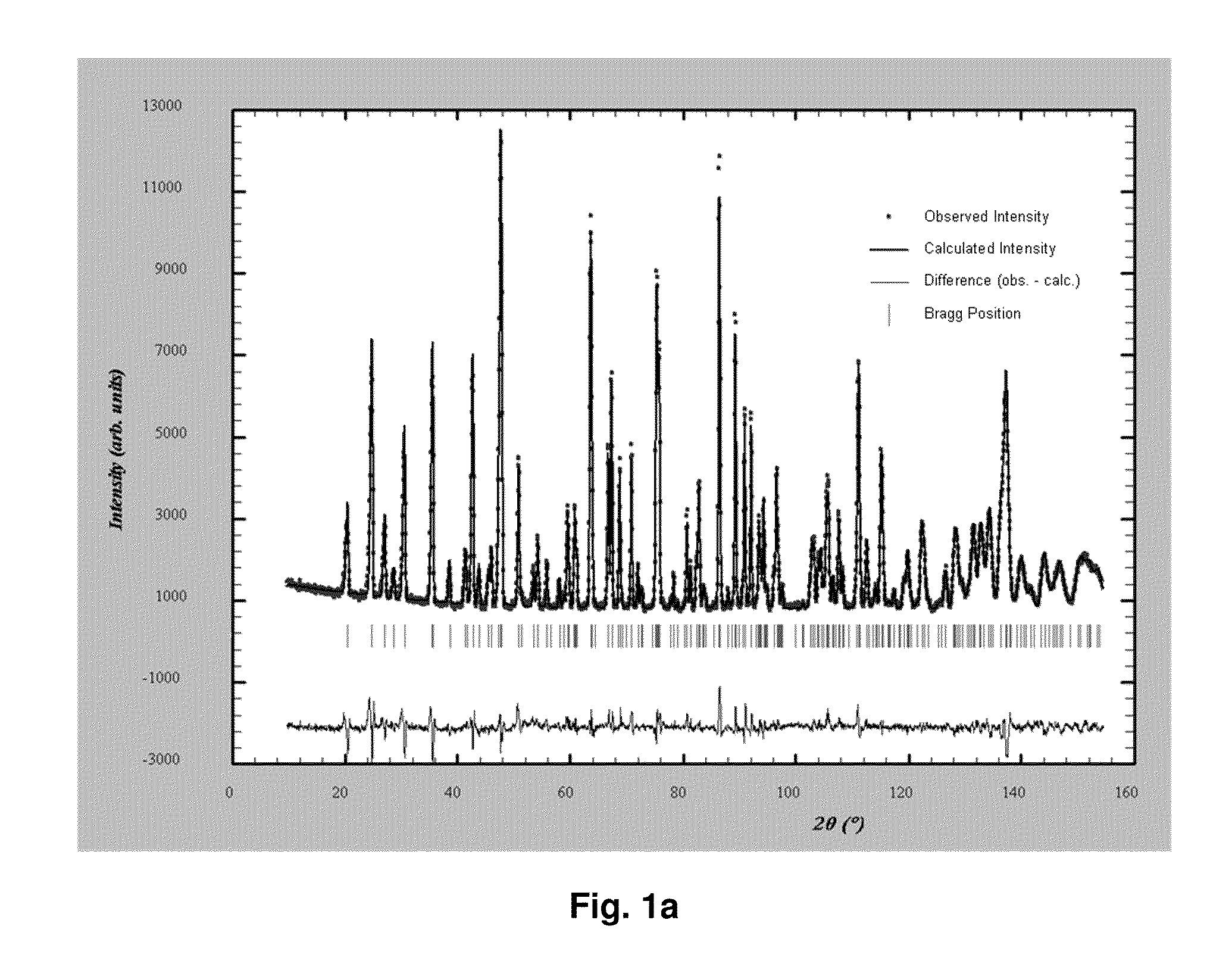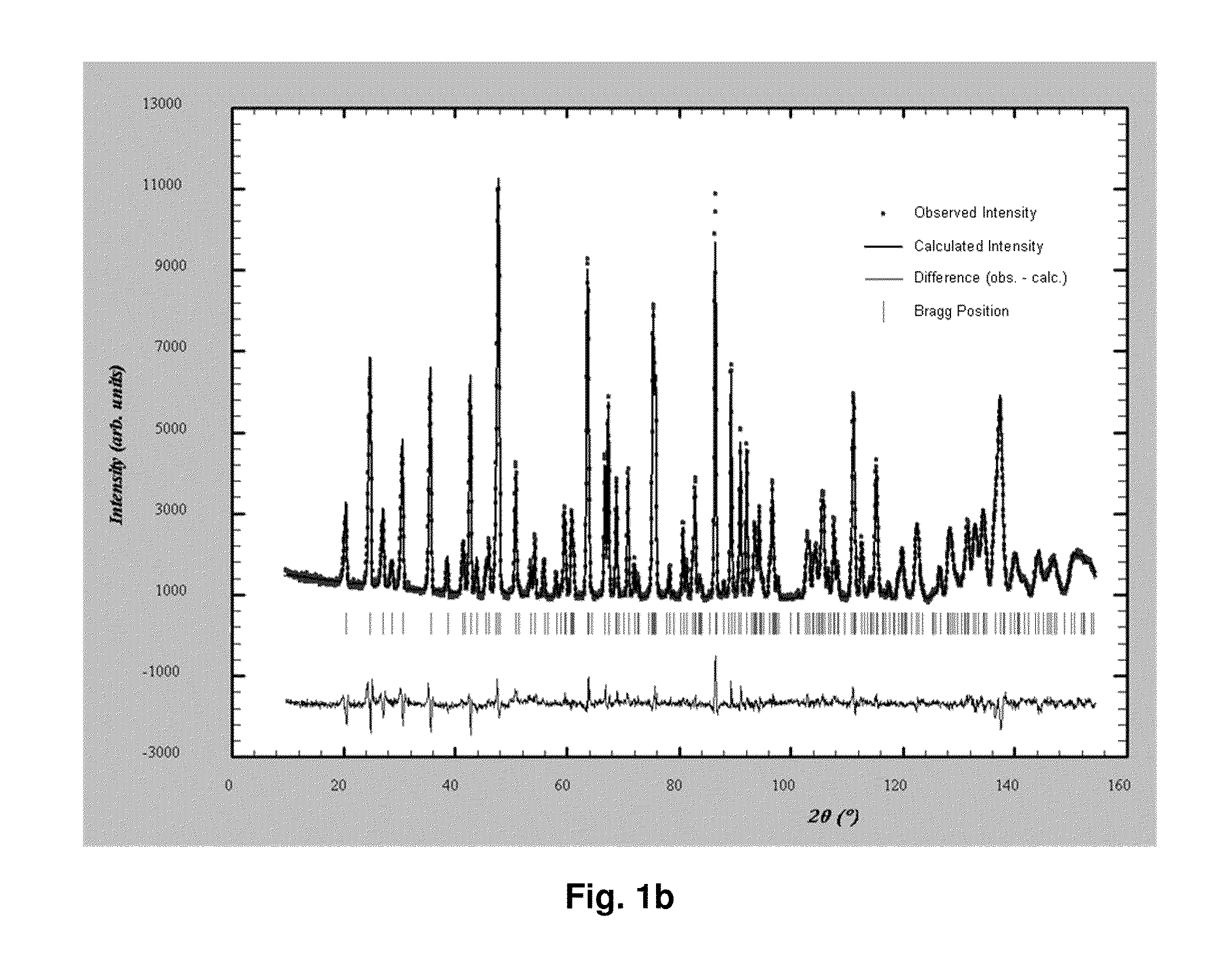Electrode-active anion-deficient non-stoichiometric lithium iron phosphate, method for preparing the same, and electrochemical device using the same
- Summary
- Abstract
- Description
- Claims
- Application Information
AI Technical Summary
Benefits of technology
Problems solved by technology
Method used
Image
Examples
example 1
[0093]A first water solution was prepared by dissolving 1 mol of ferrous sulfate heptahydrate (FeSO4.7H2O), 1 mol of phosphoric acid, and 27.8 g of sucrose in 1.6 L of water. A second water solution was prepared by dissolving 1.1 mol of ammonia and 2 mol of lithium hydroxide in 1.2 L of water. The above two water solutions were mixed by continuously pumping each of them into a mixer at room temperature and a pressure of 250 bar. As a result, a slurry of pH 6.1 containing a lithium iron phosphate precursor was obtained.
[0094]The lithium iron phosphate precursor was mixed with ultra-pure water in a mixer by pumping, under a pressure of 250 bar, ultra-pure water of about 450° C. onto the precursor in the mixer. The mixture was moved to a reactor maintained at 380° C. and 250 bar and remained therein for seven seconds. The mixture formed an anion-deficient non-stoichiometric lithium iron phosphate having low crystallinity. The lithium iron phosphate was cooled and concentrated.
[0095]The...
example 2
[0097]A first water solution was prepared by dissolving 1 mol of ferrous sulfate heptahydrate (FeSO4.7H2O), 1 mol of phosphoric acid, and 27.8 g of sucrose in 1.6 L of water. A second water solution was prepared by dissolving 1.3 mol of ammonia and 2 mol of lithium hydroxide in 1.2 L of water. The above two water solutions were mixed by pressure-pumping each of them into a mixer at ambient temperature and a pressure of 250 bar. As a result, a slurry of pH 8.4 containing a lithium iron phosphate precursor was obtained.
[0098]Said precursor underwent the same processes as in Example 1, thereby forming an anion-deficient non-stoichiometric lithium iron phosphate having low crystallinity. Said low crystalline compound was processed in the same way as in Example 1 to produce a calcined anion-deficient non-stoichiometric lithium iron phosphate and the calcined compound was found to contain Li, Fe, and P at a molar ratio of 0.877:1:0.959 and have anion deficiencies.
example 3
[0099]A first water solution was prepared by dissolving 1 mol of ferrous sulfate heptahydrate (FeSO4.7H2O), 1 mol of phosphoric acid, and 27.8 g of sucrose in 1.6 L of water. A second water solution was prepared by dissolving 1.5 mol of ammonia and 2 mol of lithium hydroxide in 1.2 L of water. The above two water solutions were mixed by pressure-pumping each of them into a mixer at ambient temperature and a pressure of 250 bar. As a result, a slurry of pH 8.5 containing a lithium iron phosphate precursor was obtained.
[0100]Said precursor underwent the same processes as in Example 1, thereby forming an anion-deficient non-stoichiometric lithium iron phosphate having low crystallinity. Said low crystalline compound was processed in the same way as in Example 1 to produce a calcined anion-deficient non-stoichiometric lithium iron phosphate and the calcined compound was found to contain Li, Fe, and P at a molar ratio of 0.868:1:0.956 and have anion deficiencies.
PUM
| Property | Measurement | Unit |
|---|---|---|
| Temperature | aaaaa | aaaaa |
| Pressure | aaaaa | aaaaa |
Abstract
Description
Claims
Application Information
 Login to View More
Login to View More - R&D
- Intellectual Property
- Life Sciences
- Materials
- Tech Scout
- Unparalleled Data Quality
- Higher Quality Content
- 60% Fewer Hallucinations
Browse by: Latest US Patents, China's latest patents, Technical Efficacy Thesaurus, Application Domain, Technology Topic, Popular Technical Reports.
© 2025 PatSnap. All rights reserved.Legal|Privacy policy|Modern Slavery Act Transparency Statement|Sitemap|About US| Contact US: help@patsnap.com



